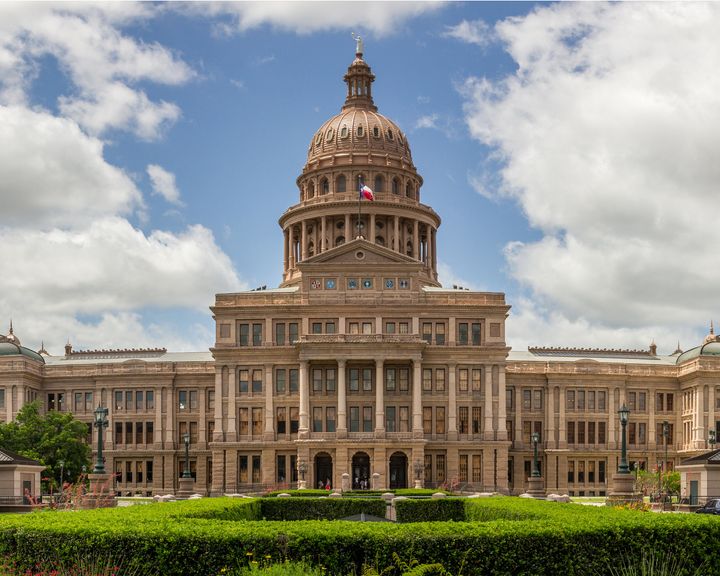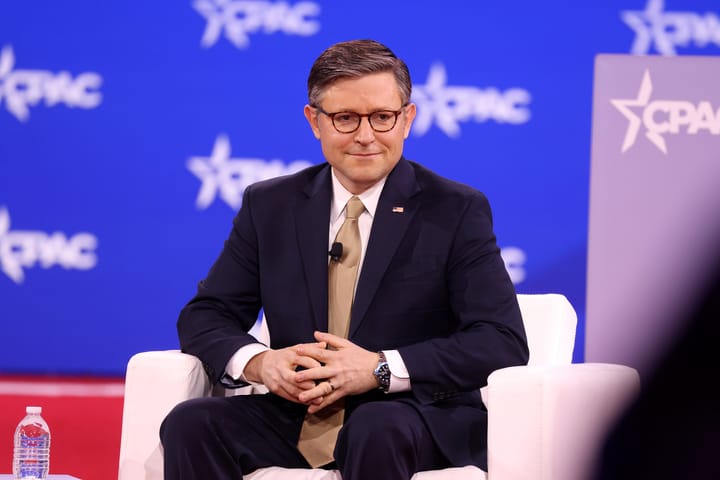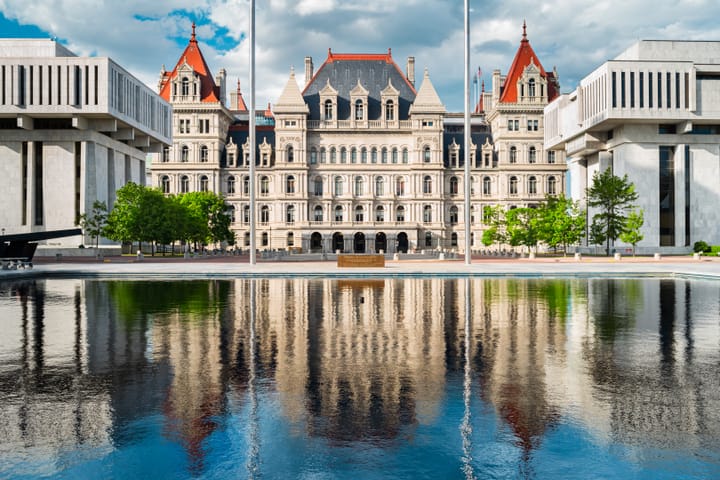State campaigns have traditionally been fueled by donors who are well-off and well-connected. While presidential campaigns have become more adept at raking in huge numbers of small donations and U.S. Senate battleground races will see multi-million dollar TV battles, candidates for governor and state legislature typically get in-state donations from a small cadre of people.
A report out this week from the think tank Campaign Finance Institute (CFI), a division of the National Institute on Money in Politics (NIMP), finds that, on average, 73% of state campaign funding from 2016 through 2019 came from large donors or PACs, while just 12% came from small donors contributing $250 or less.
The report, which is the most comprehensive and most recent data analysis of campaign contributions in states nationwide, found that under 2% of the voting age population made a donation to candidates for a state-level office.
However, if small donors are incentivized to donate state campaigns, the share currently given to politicians by large donors and special-interest PACs could be flipped on its head—nearly three-quarters of campaign funding could come from amplified donations of $250 and under, according to a CFI report from January, which examined small donor public finance in New York.
Campaign finance reformers and governments are experimenting with such incentives to increase small-donor participation in state and local elections—in New York, through a future statewide public matching funds system modeled after New York City’s successful program; and in Seattle, with a voucher program that allows residents to donate public funds to candidates and whose initial participants were more representative of the city’s population in terms of income, race, and age. Connecticut and Maine offer grants to qualifying state candidates who opt in, programs adopted in 2005 and 1996, respectively.
Over the past eight years, even with the proliferation of technology for soliciting and processing small donations, small-donor rates to state candidates have remained stubbornly flat. The share of adults donating to state campaigns since 2016 was only 1.8%, up a tick from 1.2% from 2012 through 2015.
“State elections are financed mostly by voters who give $1,000 or more, or organized interest groups,” says Michael Malbin, the co-founder and director of CFI. “From past surveys, we know that large donors to state elections are more likely than others to have material interests at stake.”
The states with the highest share of small-dollar donations are Montana, Vermont, and Alaska, but those three smaller-population states are followed by Minnesota, Colorado, and Massachusetts, according to the report. Montana’s small-donor funding share leading the way at 32%, Malbin says, is likely thanks to the state’s low individual campaign contribution limits—at $710 for governor and $360 for statewide candidates, it’s a stark contrast with New York’s 2018 limits of $65,100 for governor and $18,000 to a state Senate candidate.
“Minnesota and Colorado have high political participation rates in general, so getting people to give is part of a larger rubric of getting them engaged and keeping them engaged,” Malbin said.
The states with the lowest share of small-dollar funding are Illinois, North Dakota, and California, followed by Nevada, Missouri, and Oregon. The states that see the most campaign funding come from large donors and non-party organizations like PACs and LLCs are Nevada (90%), Alabama (89%), and Missouri and Texas (87%). Eighteen of the 47 states examined—Arizona, Connecticut, and Maine have full public financing systems—had small-donor funding shares in the single digits, including New York at 9%.
This dominance of thousand-dollar-plus donors in New York state elections could be cut down to size if a planned public matching funds system goes into effect in the state after the 2022 statewide elections. The program builds on the model of the 6-to-1 match from New York City’s longtime fair elections program, which the non-partisan policy institute Brennan Center For Justice has found helps to enhance diversity in city representation. As enacted, New York’s statewide match would amplify small donations to legislative candidates from in-district constituents at an even higher rate—for example, 12-to-1 for the first $50 donated.
A 2012 study by CFI found that in New York City’s program, matched small donations were the source for more than 60% of campaign funds.
“If you look at states with the highest percentage now from small donors, the percentage is still substantially lower than we predict will come from small donors under the public matching funds system that New York just adopted,” Malbin said. States can take steps to encourage more small donors, “but it’s nothing like the multiplier effect you get from a matching system.”
Based on campaign finance data for New York from the non-profit National Institute on Money in Politics, CFI calculated that public matching funds could rise from making up 14% of Assembly races in 2018 to making up 73%, and from 8% for Senate races to 56%. After the 2022 election, a Democratic primary challenger to Gov. Andrew Cuomo, like 2018’s Cynthia Nixon run, could see their small-donor share more than double from 38% to 79% of campaign funding, with the share of large donations falling from 41% to 17%.
“Small donor public financing programs are a key way to make government officials more accountable to the people they serve,” Chisun Lee, deputy director of the Brennan Center’s Election Reform Program, told Sludge. “By broadening racial and economic diversity of a candidate’s donor base, public financing helps boost civic participation, and helps ensure that once candidates make it to office they are responsive to a wide range of constituents when weighing important policy decisions that shape the lives of everyday Americans. And, public financing helps diversify the pool of candidates who run for office by giving people who might not have wealthy and connected donors a pathway to competitive fundraising.”
Reformers’ longtime goal of leveling the playing field for congressional elections took a step forward last year, when the Democrat-controlled House passed H.R. 1, a comprehensive ethics package that includes a public financing program. A Brennan Center analysis by senior counsel Ian Vandewalker and quantitative researcher Kevin Morris found that under H.R. 1’s donation match program, the share of money coming from small donors would jump from 13% to 56%.
When polls like one in early 2018 by NBC News report that 85% of respondents believe that special interests “pretty much run” the government for the benefit of “themselves and their friends,” public financing for campaigns could help restore public trust in representative government.



